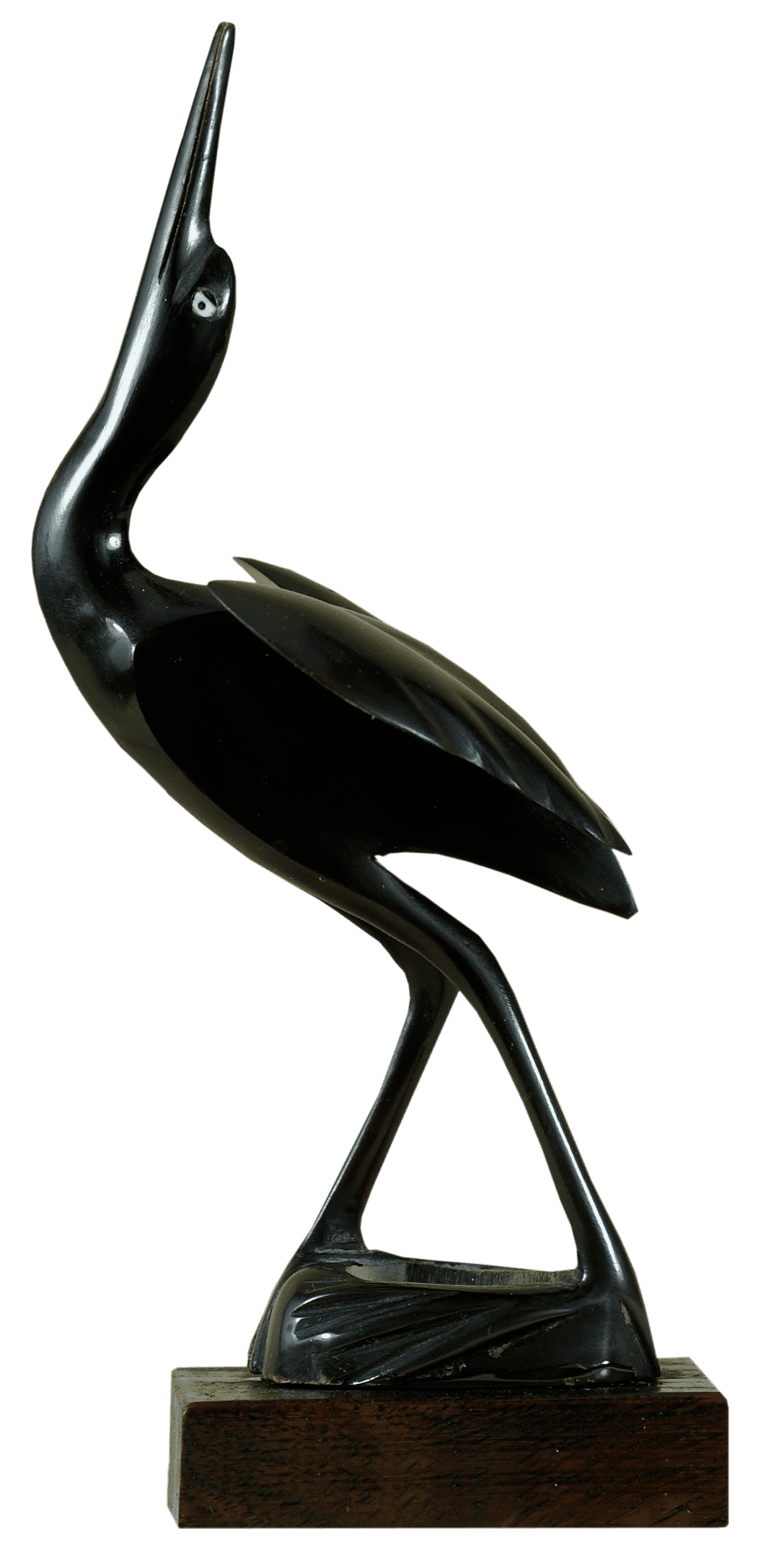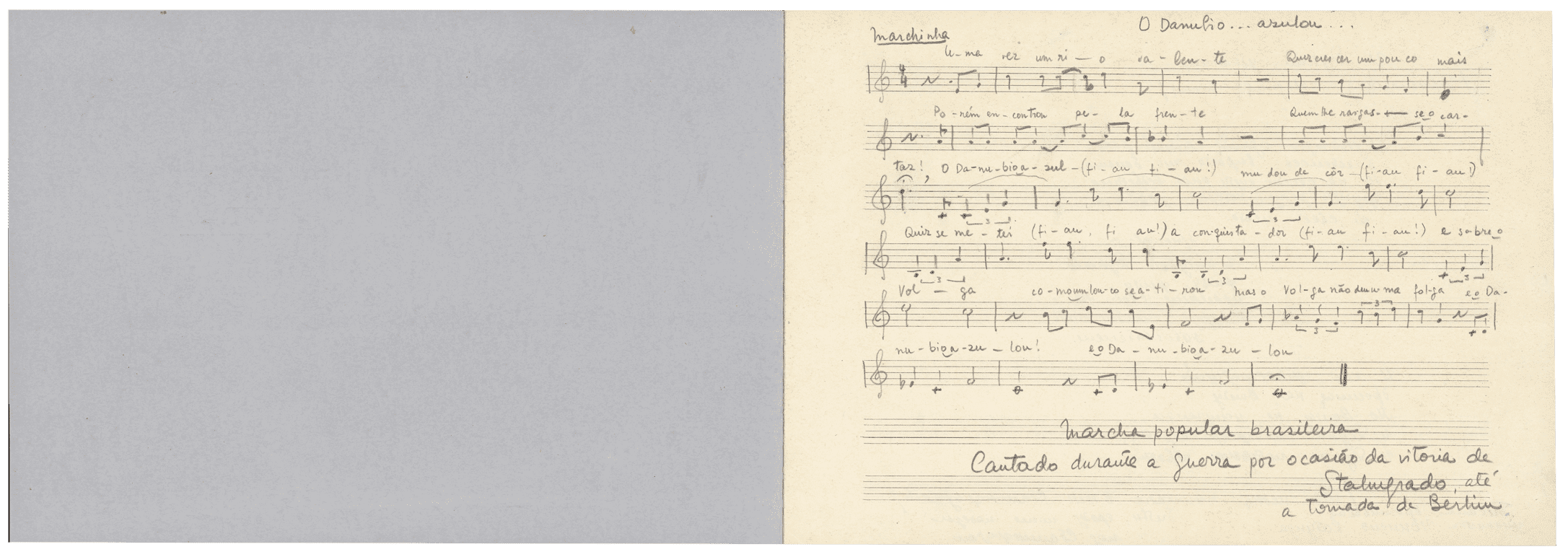Notes and text of a Brazilian folk song “And the Danube escaped…”(O Danube azulou …)
 Brazil ,
June 1953
Brazil ,
June 1953
МЗСБ КП 4858
29 х 20 cm
paper, typographic printing, pencil, ink
Notes and text of a Brazilian folk song "And the Danube escaped..."(O Danube azulou ...), performed during the war in connection with the victory at Stalingrad and the capture of Berlin. Recorded in a music notebook by a pianist Ionisie Katunda, who visited Stalingrad in June 1953. The notes and lyrics in a fake book (published in the USSR in 1952) were written by Eunice Katunda, a Brazilian pianist, who visited Stalingrad in June 1953. The inscription on the first page reads: “Marcha popular brasileira / Cantado durame a guerra por ocasiáo da vitoria de Stalingrado, alé a tomada de Berlim”
See also

Vase with a lid
 Czechoslovakia ,
15. October 1969
Czechoslovakia ,
15. October 1969
Vase with a lid
Vase with a lid. A gift from the delegation of Czechoslovakia led by Ludvík Svoboda, the President of Czechoslovakia, to the hero city of Volgograd, 15.10.1969. With the coat of arms of the Czechoslovak Socialist Republic.

Cape of demonstrators for peace and disarmament
 Australia ,
September 1963
Australia ,
September 1963
Cape of demonstrators for peace and disarmament
Inscriptions on one side: "Disarmament / is the only shelter / that guarantees / survival"; on the other: "Peace / permanent / essential / Nuclear free". A gift from the Australian communists studying in Volgograd, September 1963

Figurine of a stork on a stand
 India ,
12.07.1956
India ,
12.07.1956
Figurine of a stork on a stand
A gift from the Indian journalist Roy and his wife who visited Stalingrad 12.07.1956. The bird is standing over the nest. The head of the stork is turned to the sky, the beak is a little bit opened and the wings are spread. The figurine is carved from a Buffalo horn. The wings are glued to the body of the figurine. It is polished and glued to a wooden base.


